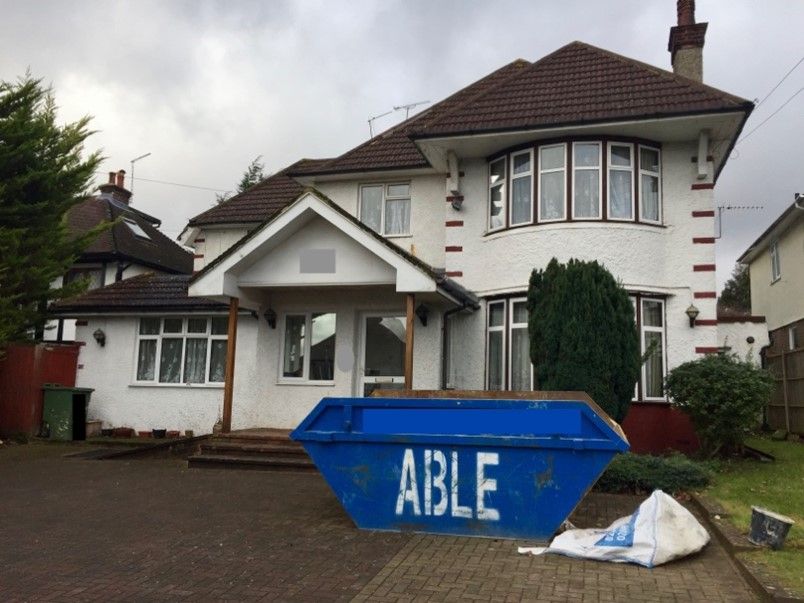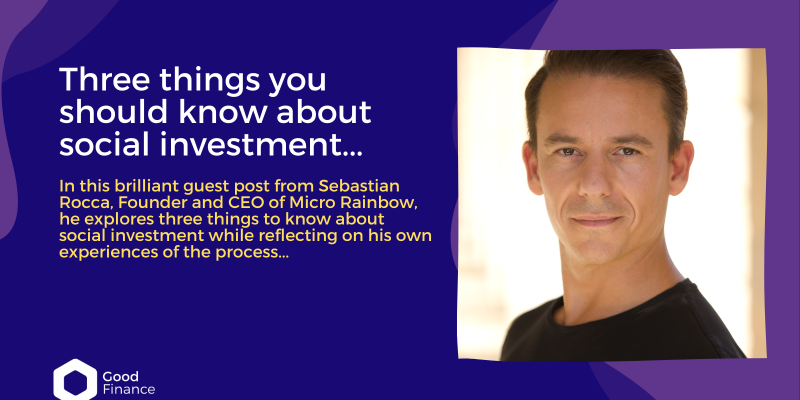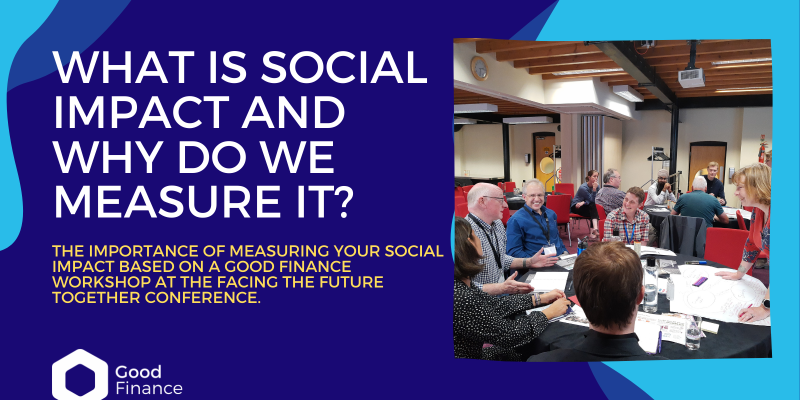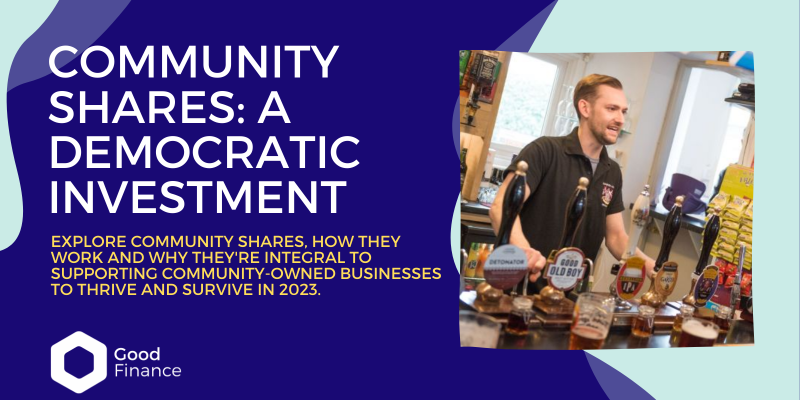Sebastian Rocca is Founder and CEO of Micro Rainbow. They have a vision to create a world where lesbian, gay, bisexual, trans, queer and intersex (LGBTQI) people are safe, free from discrimination, persecution and have equal opportunities in life, including in accessing employment, training, financial services and housing. In this guest blog, he explores the various challenges and opportunities that social investment posed for Micro Rainbow over the last few years...

I am a social entrepreneur and an advocate for social investment. Accessing social investment to scale our social enterprise has been an important part of my dream since creating Micro Rainbow.
Social investment has been transformational for Micro Rainbow. It has helped us replicate our original pilot in several UK locations and to scale our reach. We now have a model that could eradicate homelessness of LGBTQI asylum seekers in the UK by 2030.
However, the process of securing social investment has not been without its challenges. I believe that one of the most important steps for us was piloting the work. Ultimately, a series of failures has helped us secure £4 million in social investment.
Years ago, I remember thinking “Wouldn’t it be wonderful if people had an opportunity to invest in causes they love and for which they could enjoy both a financial and social return?"
Our Social Investment
At Micro Rainbow we first accessed social investment in 2021. Six of the most prestigious social investors in the UK (Joseph Rowntree Foundation, Esmée Fairbairn Foundation, Cadbury Trust, Trust for London, Postcode Innovation Trust, City Bridge Trust) came together alongside Charity Bank to support LGBTQI people fleeing persecution. Collectively, they lent Micro Rainbow approximately £4 million.
That social investment has been used to purchase houses across the UK, which we then refurbish and turn them into safe houses for LGBTQI people seeking asylum. Currently, Micro Rainbow has a capacity of 31,000 bed-nights a year. As a result of social investment, we have been able to create places where LGBTQI people can start expressing their LGBTQI identity in safety and while they go through the painstaking process of claiming asylum in the UK.
As stated above, arriving at this point has taken time and several failed attempts before arriving at our current business model. This is what I learned on the journey so far.
It Starts Out As Impossible
The quote that best summarises my experience during the early days of our exploration of social investment is Nelson Mandela’s: “It always seems impossible until it is done”.
There was a time when it really did feel impossible to achieve our mission to create the first ever housing scheme for LGBTQI people seeking asylum in the UK.
We had no experience in raising capital, in creating a social investment deal, or in running a safe housing scheme. We knew there was a gap in service provision (safe housing) and that we were already supporting hundreds of LGBTQI refugees every year with employable services who also needed safe housing. What we also had (and still have!) was passion, determination and abundant naivety.
Our first foray into social housing was an attempt to repurpose a care home into a safe home for more than 30 LGBTQI people fleeing persecution. We spent months working on the financial model, talking to investors and the planning office, estimating refurbishment costs and getting quotes from contractors. We had endless meetings and email exchanges with several lawyers and professionals (tax/property/corporate lawyers; planning advisors etc.).
Every time we went back to look at the care home, we could picture our bedrooms, the beneficiaries living there, the joy of living in a place where you could be yourself. We got more emotionally attached at every visit.

Caption: First attempt at piloting safe house
However, this pilot fell through for various reasons including planning restrictions, its location and a level of underlying xenophobia in the area. At the time it felt like a massive failure and a huge waste of time. We loved that place.
Looking back, it was a blessing in disguise. We later understood the concept would have had serious management challenges. These included keeping our beneficiaries safe at a time when there was and is so much hostility towards migrants and queer people.
So Near, Yet So Far
Our second attempt also failed, although it felt more like a learning rather than a failure. On this occasion, we started to look at homes that could house 5-8 people and we scouted several potential options. After a few months of viewings, cash flow projections, offers accepted and high hopes, we recognised that our approach was not working again.
We had been naïve. The houses did not meet planning and/or HMO regulations, which is something that is non-negotiable for us. It seemed like we were at a dead end again. It seemed impossible to find a house within our budget and that met all the regulations. We could not afford to gamble and buy a house without planning or with the hope of securing planning permission later. What if it was not granted? That would have spelled disaster.
These attempts at success took more than a year of our hard work. Looking back, it was a rollercoaster of emotions. It was upsetting. I remember it was hard to keep morale high. The excitement of opening a safe house was only met with disappointment when each possibility fell over. The pressure we felt from the growing waiting list of homeless LGBTQI asylum seekers was met with frustration and sadness by our team.
The Gifts of Failure
What we did not realise at the time was that each “failure” took us closer to the model which we have now; perhaps one could say it led to our eventual success. It is thanks to these failed pilots that we were able to shape the model we have now. We were on the right track. We just couldn’t see it at the time. We had to fail to get to where we needed to be.
After these attempts and with initial borrowing from the board, we bought our first safe house, refurbished it and got it at full capacity quickly. This process was packed with learnings that lead to fine tuning our model.
Most of our safe houses today are small four-bedroom houses that are integrated in local communities, near public transports, and in areas where people can access services and local LGBTQI specialist support. They meet HMO and planning standards. They also provide additional services compared to regular housing for asylum seekers, including unlimited WIFI and laptops.

Caption: third time lucky! A bedroom of our first safe house in 2017
These failed attempts have been instrumental in our ability to secure social investment for three main reasons:
- By the time success came, we knew our model inside out. We were able to explain to our investors why we believed our proposed model would work, the risks and share what we had learned from the failures. Our team had increased confidence that we could make it work.
- We had explored different locations and understood the regulatory system which helped us argue our timeline and geographical expansion plans.
- We had not given up. After each attempt, we as a team showed resilience: our investors knew that we could bounce back from setbacks.
As we use the remaining funds of our first round of social investment to purchase safe houses, we are excited at the prospect of securing more social investment. We now want to scale and replicate our model to the point where homelessness and violence of LGBTQI asylum seekers and refugees in the UK will be eradicated.
Going back to Nelson Mandela’s quote, we kept the focus on our dream and beneficiaries even when “it seemed impossible”. I do not believe “it is done” yet, but it certainly does not feel impossible anymore.
So what have I learned? Pilot, fail. Pilot again, fail less. You are getting there.
The team at Good Finance would like to say a huge thank you to Sebastian for sharing his experiences with us, including key learnings and reflections to help other organisations who are perhaps earlier on in their journey. To support Micro Rainbow and the incredible impact they make, checkout how to Become an Ally , explore their Amazon Wishlist or learn more about volunteering opportunities via their website.





